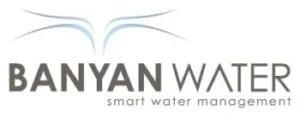Maintenance and management of large facilities and properties like universities, hospitals, or corporate business campuses can be accurately described by the term “systems management.“ There are many systems in a facility that operate aspects of the local environment: the HVAC systems, the electrical and your water system. None are independent from the others in their operation, but each has its own influences on management and maintenance practices and costs.
When evaluating the efficiency of your systems management, consider the following questions:
- What inputs are needed to operate the system?
- What outputs can be reused?
- What information do you need to best manage these systems?
Let’s take a closer look at one system, water. As with all building environments, there are structural components that go into your facility: faucets, toilets, drains, all of which need to be engineered, installed and appropriately and effectively operated. Foresight and design can make these systems’ value most economically obvious.
For example, the EPA states almost 40 percent of indoor water is flushed down the drain in toilets. Let’s say you currently have 1,000 standard flush toilets across your property and are looking to double that amount in your next property expansion. Initial installation of low-flow toilets can be the same cost as installing standard flush toilets and will reduce water usage property-wide. Retrofitting more than 2,000 units could be a nightmare for any management team if you don’t make the smart investment now. Today’s technology is not just about where you source your water, but also how that water is allocated throughout the rest of your system’s management loops.
Developing ways to reuse those outputs has been at the forefront of emerging technology. Not only are wastewater reuse methods becoming easier, but industry technology has made them more economical than ever. Grey water can be reused for irrigation, and plumbing for these is becoming more common in newly designed buildings. Often, however, the cost eliminates the possibility of retrofitting existing structures. Still, there are more ways than ever to collect and reuse water that can be economical even for existing infrastructure. Advancements in water collection methods for HVAC systems and cooling towers have cut down on water that was wasted down the drain or out of the back of a building, water that can often be used to supply water features on a property like fountains or toilets that use fresh water.
As technologies in water collection and reuse continue to develop, the information needed to manage them becomes more important. Say, for instance, you are planning on using water from your hand sinks to irrigate your landscape. You need to know how much water you need to sustain your landscape and how much water will result from your sinks’ outflow. With methods that capture flow, can forecast use and can show historical patterns, you can better manage your systems cycle of use and reuse, bringing both lower costs and greater results.
